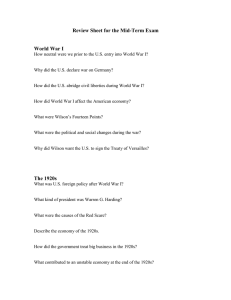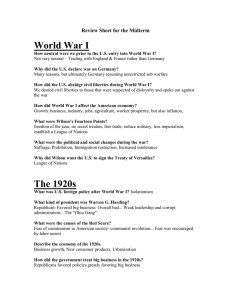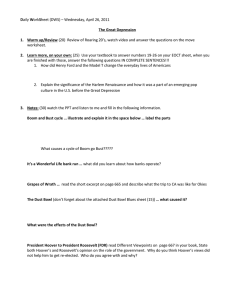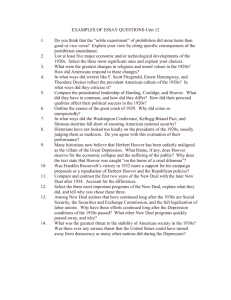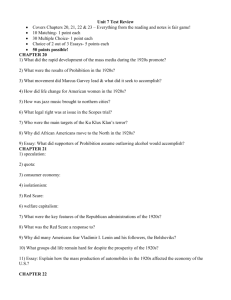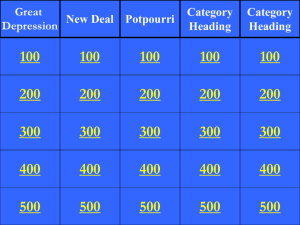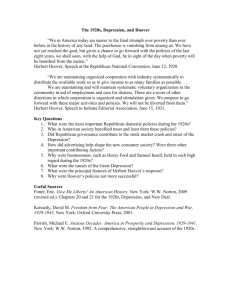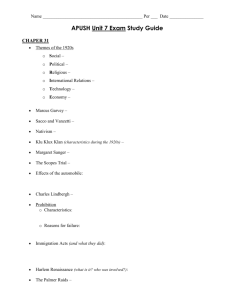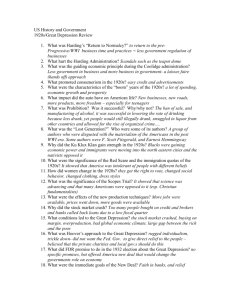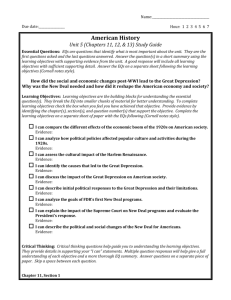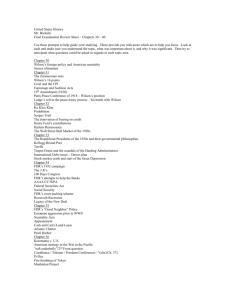Unit 14: The 1920*s and 1930*s
advertisement
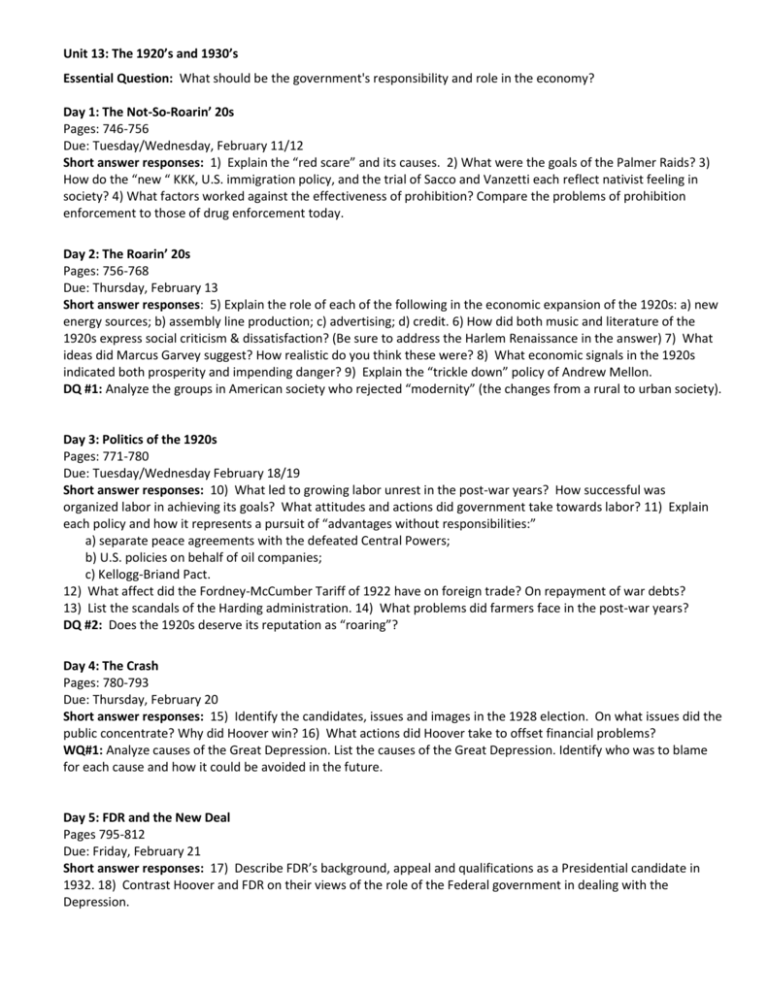
Unit 13: The 1920’s and 1930’s Essential Question: What should be the government's responsibility and role in the economy? Day 1: The Not-So-Roarin’ 20s Pages: 746-756 Due: Tuesday/Wednesday, February 11/12 Short answer responses: 1) Explain the “red scare” and its causes. 2) What were the goals of the Palmer Raids? 3) How do the “new “ KKK, U.S. immigration policy, and the trial of Sacco and Vanzetti each reflect nativist feeling in society? 4) What factors worked against the effectiveness of prohibition? Compare the problems of prohibition enforcement to those of drug enforcement today. Day 2: The Roarin’ 20s Pages: 756-768 Due: Thursday, February 13 Short answer responses: 5) Explain the role of each of the following in the economic expansion of the 1920s: a) new energy sources; b) assembly line production; c) advertising; d) credit. 6) How did both music and literature of the 1920s express social criticism & dissatisfaction? (Be sure to address the Harlem Renaissance in the answer) 7) What ideas did Marcus Garvey suggest? How realistic do you think these were? 8) What economic signals in the 1920s indicated both prosperity and impending danger? 9) Explain the “trickle down” policy of Andrew Mellon. DQ #1: Analyze the groups in American society who rejected “modernity” (the changes from a rural to urban society). Day 3: Politics of the 1920s Pages: 771-780 Due: Tuesday/Wednesday February 18/19 Short answer responses: 10) What led to growing labor unrest in the post-war years? How successful was organized labor in achieving its goals? What attitudes and actions did government take towards labor? 11) Explain each policy and how it represents a pursuit of “advantages without responsibilities:” a) separate peace agreements with the defeated Central Powers; b) U.S. policies on behalf of oil companies; c) Kellogg-Briand Pact. 12) What affect did the Fordney-McCumber Tariff of 1922 have on foreign trade? On repayment of war debts? 13) List the scandals of the Harding administration. 14) What problems did farmers face in the post-war years? DQ #2: Does the 1920s deserve its reputation as “roaring”? Day 4: The Crash Pages: 780-793 Due: Thursday, February 20 Short answer responses: 15) Identify the candidates, issues and images in the 1928 election. On what issues did the public concentrate? Why did Hoover win? 16) What actions did Hoover take to offset financial problems? WQ#1: Analyze causes of the Great Depression. List the causes of the Great Depression. Identify who was to blame for each cause and how it could be avoided in the future. Day 5: FDR and the New Deal Pages 795-812 Due: Friday, February 21 Short answer responses: 17) Describe FDR’s background, appeal and qualifications as a Presidential candidate in 1932. 18) Contrast Hoover and FDR on their views of the role of the Federal government in dealing with the Depression. WQ#2: RAFT Role: newspaper reporter in the 1930s Audience: American readers Format: Editorial newspaper article Topic: Explanation and critique (or support) of the “extreme” solutions offered to the Great Depression by either Huey P. Long, Dr. Townsend or Father Coughlin. WQ#3: FILL OUT THE NEW DEAL GRID Day 7: New Deal—Genius or smokescreen? Pages 812-821 Due: Monday, February 24 Short answer responses: 19) How did the AFL and CIO differ in philosophy and organization? 20) How did FDR plan to “pack” the Supreme Court? What were the short and long term results of his battle with the courts? 21) How did the following groups benefit from the New Deal? a) organized labor; b) immigrants; c) minorities; d) women. DQ #3: Was the New Deal a success? In what areas did it help and where did it find its limitations? ***TEST DAY: TUESDAY/WEDNESDAY FEBRUARY 25/26**** KEY IDEAS: Negatives and positives of the 1920s; International post-war issues and U.S. influence; Causes and effects of Great Depression; Effectiveness of the New Deal
